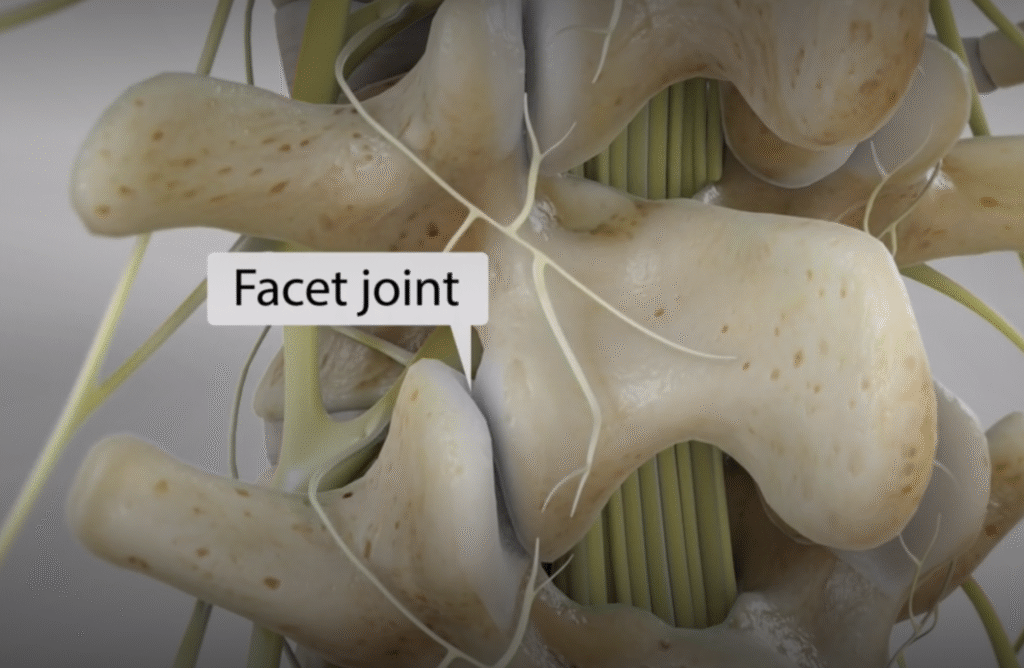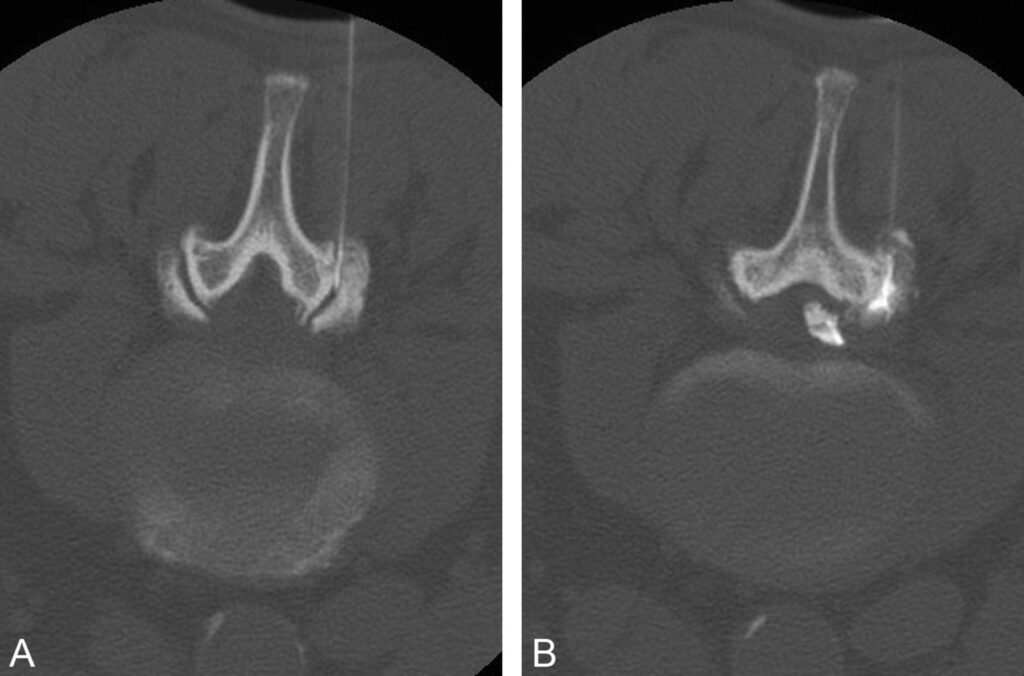Common Conditions
Facet joint pain
Facet joint pain is a common condition that originates from the small joints located between the vertebrae of the spine. These facet joints help provide stability and enable smooth movement of the spine. When they become inflamed or damaged due to injury or arthritis, increased biomechanical loading. Facet joints typically cause relatively localized pain in the neck, mid back or lower back. Very occasionally facet joint pain refers to other regions and limbs. Facet joint pain is responsible for around 20-25% of low back pain and the incidence increases with age.
What causes facet joint pain?
Facet joint pain can develop for a variety of reasons, including:
- Arthritis: Facet joint osteoarthritis can cause the cartilage in the facet joints to wear down, leading to inflammation and pain.
- Injury or trauma: Sudden impacts, such as those from car accidents or falls, can strain or damage the facet joints and may lead to arthritis.
- Postural stress: Poor posture, obesity or repetitive movements that put strain on the spine can contribute to facet joint pain.
- Degeneration: Age-related wear and tear can result in the breakdown of the facet joints. Disc degeneration with loss of disc height can lead to secondary facet joint pain due to secondary overload.
Facet joint pain can develop for a variety of reasons, including:
- Arthritis: Facet joint osteoarthritis can cause the cartilage in the facet joints to wear down, leading to inflammation and pain.
- Injury or trauma: Sudden impacts, such as those from car accidents or falls, can strain or damage the facet joints and may lead to arthritis.
- Postural stress: Poor posture, obesity or repetitive movements that put strain on the spine can contribute to facet joint pain.
- Degeneration: Age-related wear and tear can result in the breakdown of the facet joints. Disc degeneration with loss of disc height can lead to secondary facet joint pain due to secondary overload.

Common symptoms of facet joint pain
The symptoms of facet joint pain often vary depending on the affected region of the spine but can include:
- Localized pain: A sharp or aching pain near the affected joint, commonly in the neck, middle back, or lower back. Sometimes this pain is sometimes increased in spinal extension.
- Referred pain: Pain may radiate to other areas, such as the shoulders, ribs, buttocks, or thighs.
- Stiffness: Reduced flexibility in the spine.
- Increased pain with movement: Activities including twisting, bending, or extending the spine may worsen the pain from facet joints.
- Tenderness: The area around the affected joint may feel tender to the touch and is maximal slightly off to the side of the midline.
Diagnosis of facet joint pain
Diagnosing facet joint pain begins with a review of your symptoms and a physical examination. A doctor will ask about the location of your pain – typically in the neck or lower back – and whether it worsens with twisting, bending, or prolonged standing. The doctor will also check for tenderness over the facet joints and assess your spinal movement.
Imaging tests, including X-rays, nuclear medicine bone scans, CT scans or MRI scans, can help identify arthritis or degeneration in the facet joints. As with many spinal conditions, facet joint arthritis is often reported on advanced imaging and is not necessarily the source of pain.
To accurately diagnose true facet joint pain, a diagnostic injection into the joint or nerves supplying the joint is regarded as the gold standard. If the pain is temporarily relieved, this confirms the facet joint as the likely source of the symptoms.

Management of facet joint pain
Treatment for facet joint pain initially aims to reduce inflammation, relieve pain, and improve spine function. Common approaches include:
- Physical therapy: Strengthening the muscles that support the spine and improving flexibility can help alleviate pain and prevent recurrence.
- Medications: Nonsteroidal anti-inflammatory drugs (NSAIDs) or other pain relievers such as paracetamol can reduce inflammation and discomfort.
- Injections: Facet joint injections of cortisone can provide temporary pain relief by targeting the affected area. This also serves as a diagnostic test.
- Lifestyle changes: Maintaining a healthy weight, practicing good posture, and avoiding activities that stress the spine can help manage symptoms.
- Radiofrequency ablation: This minimally invasive procedure uses thermal energy to block pain signals by burning or resetting the local nerves supplying the facet joint.
- Surgery: In rare cases, surgery may be considered if symptoms are severe or do not respond to other treatments.


